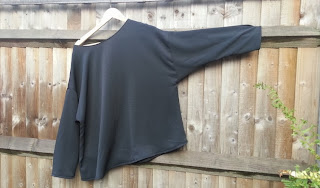This is tote-ally unexpected (sorry) but I just made a bag!
I had no intention of getting busy on this, it was a sudden impulse and there we are. A great use of a few hours this afternoon.
I want it to carry crafts stuff around with me, so ideally it should have lots of compartments and side pockets (this one hasn't) but I have so much fabric to use up, making this very plain and simple tote is such progress.
I don't know how I am going to use up all of the fabric and wool that I've accummulated. Not in the next ten years plus, or so, I should think.
So I've got plenty more bag projects in me, next time I can add a little side pocket, or compartments or something. Perhaps reinforce the handles (I forgot. Oh well) and I could use slightly more sturdy fabric. It's just a big floppy. Everything contributes a bit to learning something. So worth it.
But all in all I am really pleased with this one.
The fabric lends itself so well to a bag that firmly says: "I'm all about crafts, please carry me!" - so I reckon it was a given. I still have some of the fabric left to use for patchwork and quilting as intended. And appliqué: some of those little shapes and motifs would be very cute.
I will highly likely hand-sew a running stitch along the outer shell, just a good quarter inch away from the seam with the lining that shows up at the top.
I made this bag up with a pattern off the top of my head. Having had to wait for a hospital appointment earlier in the year I had the chance to look at the tote bag of a really lovely lady who was sitting next to me, and who I got chatting to (I also really liked her style in clothes: individual and cheerful. She was great!). She didn't mind me picking up her bag and having a good look at it. I don't think I've ever had a nicer time waiting for an appointment.
I hadn't seen this construction technique before where you insert the handles lower down than the top edge and basically use the lining fabric (or a third fabric) for the top strip.
I was able to assemble the whole thing (with handles sandwiched in between) as one big roll. The last seam I closed was the bottom seam of the lining and even there I used my machine for the most part: just pulling the edges together until it squashed up the rest of the bag - then I stopped. That left about three inches or so that I sewed shut by hand once I turned the bag inside out through that remaining hole.
Really enjoyed making this. I like the result and hope to use it lots.
















